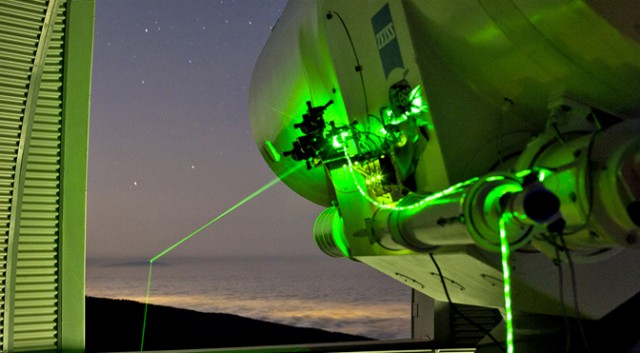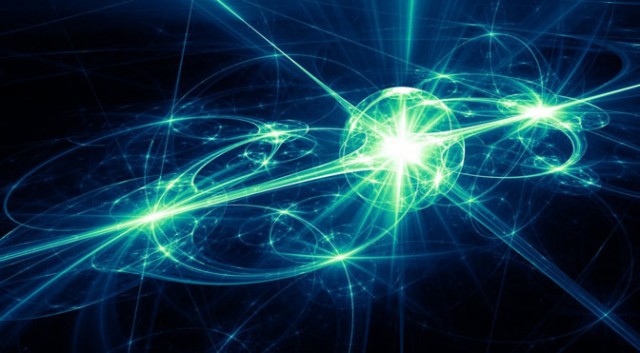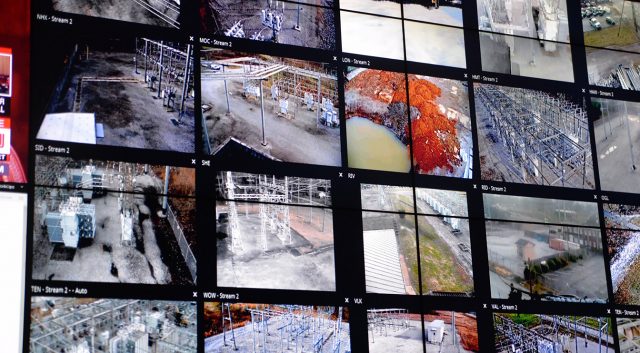The long-range teleportation barrier has already been broken multiple times, but the information being transported, such as a single quantum bit (qubit), has always been relatively small, usually between two photons. This time around, a team of physicists have managed to transport information from one macroscopic (visible to the naked eye) object to another for the first time, potentially leading us towards the first quantum network routers.
Qubits — the basis for quantum networking and computing — are highly unstable, and are destroyed by a single measurement. However, physicists have figured out how to send a qubit without destroying it through the use of teleportation, managing to send them over large distances in the past — once over a distance of 60 miles, and another over a distance of 89 miles. Essentially, two quantum objects are linked together, so a measurement of one affects the other, which has allowed physicists to teleport a qubit without it actually moving through the space between two locations.
However, up until now, each successful teleportation has been between either two microscopic objects, or one micro and one macroscopic object. Now, Xiao-Hui Bao and a team at the University of Science and Technology in China reported that they have managed to teleport information between two macroscopic objects — two groups of rubidium atoms — over a distance of 150 meters. Though it wasn’t over a distance of 60 or 89 miles, this was the first time quantum information has been teleported between two macroscopic objects, and at a macroscopic scale.
 Due to their instability, it’s not known how qubits would fare being passed through a router. Seeing as how a quantum internet is a goal of quantum teleportation, learning if a macroscopic object like a router would damage a qubit is an essential step toward that goal. Thanks to Xiao-Hui Bao and company, we’re one step closer toward figuring out how to keep quantum information safe through the teleportation process.
Due to their instability, it’s not known how qubits would fare being passed through a router. Seeing as how a quantum internet is a goal of quantum teleportation, learning if a macroscopic object like a router would damage a qubit is an essential step toward that goal. Thanks to Xiao-Hui Bao and company, we’re one step closer toward figuring out how to keep quantum information safe through the teleportation process.
This teleportation, though successful, is only a very preliminary step toward a quantum router. Before physicists can move on to actually building a quantum router or attempting to transport significantly more information with one teleport, a host of other issues must be overcome. Currently, quantum information can only be stored for around 100 milliseconds before it leaks out, and the success rate for teleportation isn’t yet consistent enough. Physicists must also build and successfully teleport a grouping of atoms that more closely resembles the kind of information that would be sent through quantum routing.
However, it was only a couple of months ago that physicists set a new teleportation distance record, and today physicists set a size record, so it looks like we’re on the right track.
More reading: New quantum teleportation record paves way toward quantum Internet
Research paper: arXiv:1211.2892 – “Quantum teleportation between remote atomic-ensemble quantum memories”




